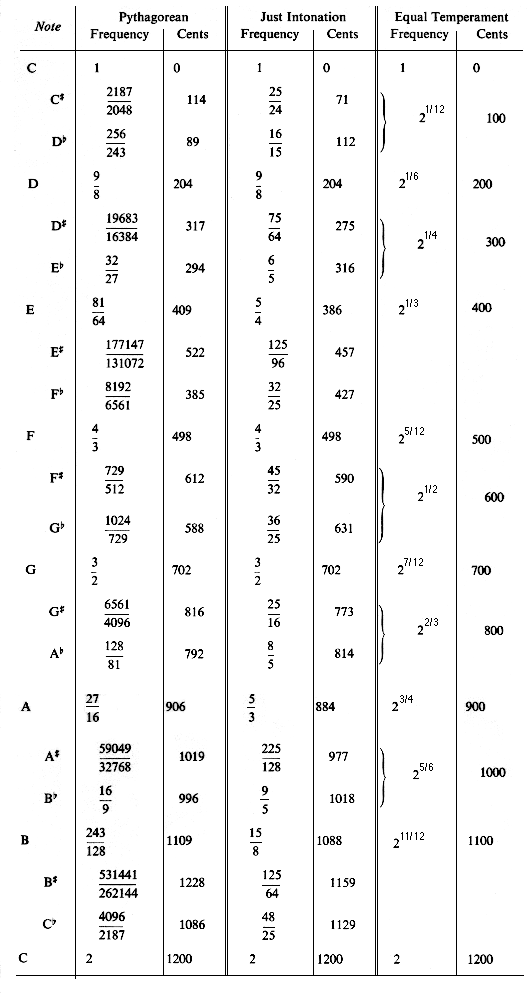Octave Number
Frequency equivalents in hertz of the pitches of the equal tempered scale over the range of the piano keyboard.
The following chart (from C.A. Taylor, The Physics of Musical Sounds, London, 1965, pp. 128-9, used by permission) shows the comparative frequency ratios in Hertz and cents of the notes in the scale as they occur in the PYTHAGOREAN, JUST INTONATION, and EQUAL TEMPERAMENT systems of TUNING.

home